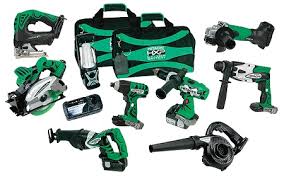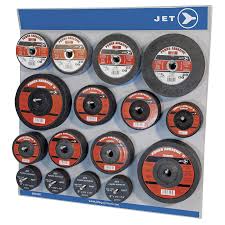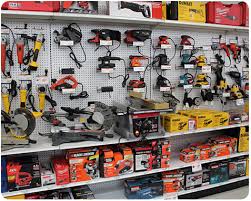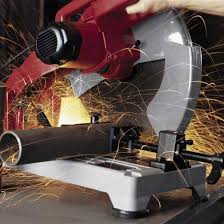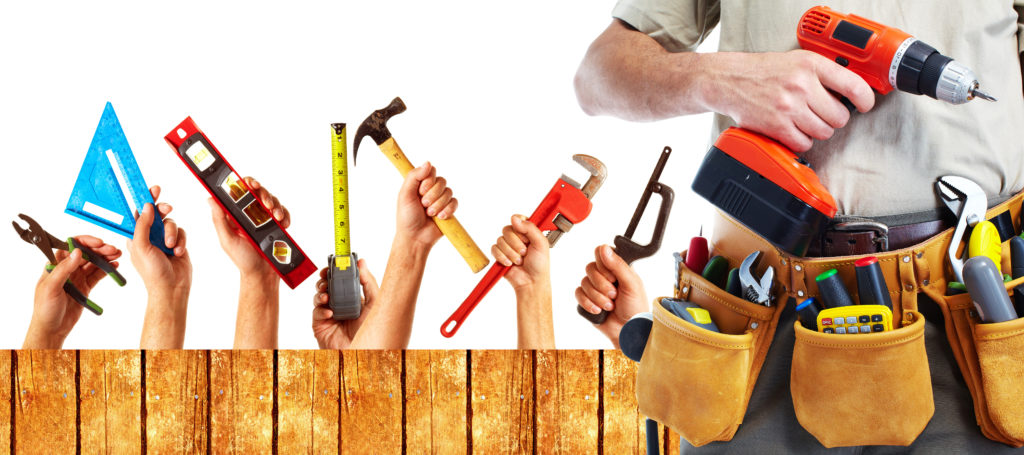
Portable, bench or floor mounted power tools and equipment need routine maintenance, inspection and adjustments to ensure safe operation. Tool bits, blades and other changeable parts must be kept sharp and free from damage. Electrical systems, belts & pulleys and gears must be properly guarded to prevent exposing employees to hazards.
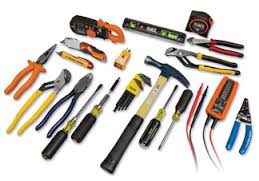
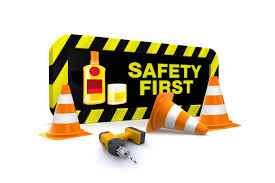
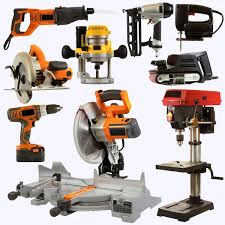
Tool General Safety Precautions:
Employees who use hand and power tools and who are exposed to the hazards of falling, flying, abrasive and splashing objects, or exposed to harmful dusts, fumes, mists, vapors, or gases must be provided with the particular personal equipment necessary to protect them from the hazard. All hazards involved in the use of tools can be prevented by following five basic safety rules:
- Keep all tools in good condition with regular maintenance.
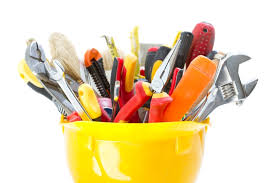
- Use the right tool for the job.
- Examine each tool for damage before use.
- Operate according to the manufacturer’s instructions.
- Provide and use the proper protective equipment.
Hand Tools:
Hand tools are non-powered. They include anything from axes to wrenches. The greatest hazards posed by hand tools result from misuse and improper maintenance.Some examples:
• Using a screwdriver as a chisel may cause the tip of the screwdriver to break and fly, hitting the user or other employees.
• If a wooden handle on a tool such as a hammer or an axe is loose, splintered, or cracked, the head of the tool may fly off and strike the user or another worker.
• A wrench must not be used if its jaws are sprung, because it might slip.
• Impact tools such as chisels, wedges, or drift pins are unsafe if they have mushroomed heads.
The heads might shatter on impact, sending sharp fragments flying.Appropriate personal protective equipment, e.g., safety goggles, gloves, etc., should be worn due to hazards that may be encountered while using portable power tools and hand tools.Floors shall be kept as clean and dry as possible to prevent accidental slips with or around dangerous hand tools.Around flammable substances, sparks produced by iron and steel hand tools can be a dangerous ignition source. Where this hazard exists, spark-resistant tools made from brass, plastic, aluminum, or wood will provide for safety.
Basic tips when using hand tools:
- Always provide training on how to choose the right tool for the job, how to correctly use each tool, and how to identify when tools need repair.
- Select the right tool for the job. Substitutes increase the chance of having an accident.
- Use tools designed to allow wrist to stay straight. Avoid using hand tools with your wrist bent.
- Ensure that employees are properly trained in the safe use of hand tools.
- Use good quality tools.
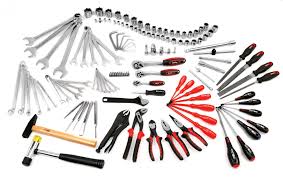
- Keep tools in good condition at all times.
- Inspect tools for defects before use. Replace or repair defective tools.
- Keep cutting tools sharp and cover sharp edges with suitable covering to protect the tool and to prevent injuries from unintended contact.
- Replace cracked, splintered, or broken handles on files, hammers, screwdrivers, or sledges.
- Ensure that the handles of tools like hammers and axes fit tightly into the head of the tool.
- Replace worn jaws on wrenches, pipe tools and pliers.
- Redress burred or mushroomed heads of striking tools.
- Pull on a wrench or pliers. Never push unless you hold the tool with your palm open.
- Point sharp tools (e.g., saws, chisels, knives) laying on benches away from aisles and handles should not extend over the edge of the bench top.
- Maintain tools carefully. Keep them clean and dry, and store them properly after each use.
- Carry tools in a sturdy tool box to and from the work site.
- Wear safety glasses or goggles, or a face shield (with safety glasses or goggles) and well-fitting gloves appropriate for the hazards to which you may be exposed when doing various tasks.
- Keep the work environment clean and tidy to avoid clutter which may cause accidents.
- Use a heavy belt or apron and hang tools at your sides, not behind your back.
Power Tool Precautions:
Power tools can be hazardous when improperly used. There are several types of power tools, based on the power source they use: electric, pneumatic, liquid fuel, hydraulic, and powder-actuated.The following general precautions should be observed by power tool users:
The following general precautions shall be observed by power tool users:
- Never carry a tool by the cord or hose;
- Never remove prongs from any cords;
- Never stand in or near water when using tools;
- Always use a Ground Fault Circuit Interrupter (GFCI) with electrical tools if working in a wet environment;
- Never “yank” the cord or the hose to disconnect it from the receptacle;
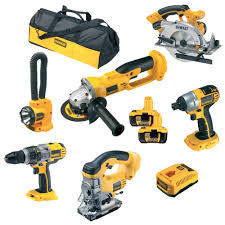
- Keep cords and hoses away from heat, oil and sharp edges;
- Replace all frayed and/or damaged extension cords. Do not try to tape cords;
- Disconnect tools when not in use, before servicing and when changing accessories such as blades, bits and cutters;
- All observers shall be kept at a safe distance away from the work area;
- Secure work with clamps or a vise, freeing both hands to operate the tool;
- Avoid accidental starting. The worker shall not hold a finger on the switch button while carrying a plugged-in tool;
- Tools shall be maintained with care. They shall be kept sharp and clean for the best performance. Follow instructions in the user’s manual for maintenance, lubricating and changing accessories;
- Maintain good footing and balance;
- Avoid loose fitting clothes, ties or jewelry such as bracelets, watches or rings, which can become caught in moving parts;
- Use tools that are either double-insulated or grounded (three-pronged);
- Keep work area well lit when operating electric tools;
- Ensure that cords and hoses do not pose as a tripping hazard; and
- All portable electric tools that are damaged shall be removed from use and tagged “Do Not Use”. This shall be done by supervisors and/or employees.
Tool Guards:
Hazardous moving parts of a power tool need to be safeguarded. For example, belts, gears, shafts, pulleys, sprockets, spindles, drums, fly wheels, chains, or other reciprocating, rotating, or moving parts of equipment must be guarded. Guards, as necessary, should be provided to protect the operator and others from the following: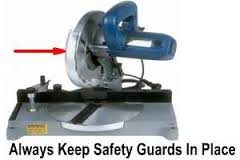
Safety guards must never be removed when a tool is being used. For example, portable circular saws must be equipped with guards. An upper guard must cover the entire blade of the saw. A retractable lower guard must cover the teeth of the saw, except when it makes contact with the work material. The lower guard must automatically return to the covering position when the tool is withdrawn from the work.
Tool Safety Switches:
The following hand-held powered tools are to be equipped with a momentary contact “on-off” control switch: drills, tappers, fastener drivers, horizontal, vertical and angle grinders with wheels larger than 2 inches in diameter, disc and belt sanders, reciprocating saws, saber saws, and other similar tools. These tools also may be equipped with a lock-on control provided that turnoff can be accomplished by a single motion of the same finger or fingers that turn it on.The following hand-held powered tools may be equipped with only a positive “on-off” control switch: platen sanders, disc sanders with discs 2 inches or less in diameter; grinders with wheels 2 inches or less in diameter; routers, planers, laminate trimmers, nibblers, shears, scroll saws and jigsaws with blade shanks ¼-inch wide or less.Other hand-held powered tools such as circular saws having a blade diameter greater than 2 inches, chain saws, and percussion tools without positive accessory holding means must be equipped with a constant pressure switch that will shut off the power when the pressure is released.
Tool Electrical Safety: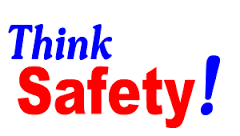
Among the chief hazards of electric-powered tools are burns and slight shocks which can lead to injuries or even heart failure. Under certain conditions, even a small amount of current can result in severe injury and eventual death. A shock also can cause the user to fall off a ladder or other elevated work surface.To protect the user from shock, tools must either have a three-wire cord with ground and be grounded, be double insulated, or be powered by a low-voltage isolation transformer. Three-wire cords contain two current-carrying conductors and a grounding conductor. One end of the grounding conductor connects to the tool’s metal housing. The other end is grounded through a prong on the plug. Anytime an adapter is used to accommodate a two-hole receptacle, the adapter wire must be attached to a known ground. The third prong should never be removed from the plug.Double insulation is more convenient. The user and the tools are protected in two ways: by normal insulation on the wires inside, and by a housing that cannot conduct electricity to the operator in the event of a malfunction.
Electric Power Tool General Safety Practices: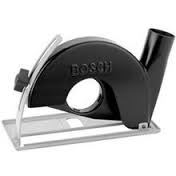
- Electric tools should be operated within their design limitations.
- Gloves and safety footwear are recommended during use of electric tools.
- When not in use, tools should be stored in a dry place.
- Electric tools should not be used in damp or wet locations.
- Work areas should be well lighted.
Powered Abrasive Wheel Tools:
Powered abrasive grinding, cutting, polishing, and wire buffing wheels create special safety problems because they may throw off flying fragments. Before an abrasive wheel is mounted, it should be inspected closely and sound- or ring-tested to be sure that it is free from cracks or defects. To test, wheels should be tapped gently with a light non-metallic instrument. If they sound cracked or dead, they could fly apart in operation and so must not be used. A sound and undamaged wheel will give a clear metallic tone or “ring.” To prevent the wheel from cracking, the user should be sure it fits freely on the spindle. The spindle nut must be tightened enough to hold the wheel in place, without distorting the flange.
pneumatic tools:
Pneumatic tools are powered by compressed air. Common types of these air-powered hand tools that are used in industry include buffers, nailing and stapling guns, grinders, drills, jack hammers, chipping hammers, riveting guns, sanders and wrenches.
Use pneumatic tools safely:
- Review the manufacturer’s instruction before using a tool.
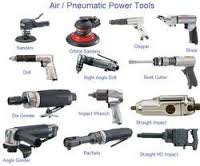
- Wear safety glasses or goggles, or a face shield (with safety glasses or goggles), and, where necessary, safety shoes or boots and hearing protection.
- Post warning signs where pneumatic tools are used. Set up screens or shields in areas where nearby workers may be exposed to flying fragments, chips, dust, and excessive noise.
- Ensure that the compressed air supplied to the tool is clean and dry. Dust, moisture, and corrosive fumes can damage a tool. An in-line regulator filter and lubricator increases tool life.
- Keep tools clean and lubricated, and maintain them according to the manufacturers’ instructions.
- Use only the attachments that the manufacturer recommends for the tools you are using.
- Be careful to prevent hands, feet, or body from injury in case the machine slips or the tool breaks.
- Reduce physical fatigue by supporting heavy tools with a counter-balance wherever possible.
Handle air hoses:
- Use the proper hose and fittings of the correct diameter.
- Use hoses specifically designed to resist abrasion, cutting, crushing and failure from continuous flexing.
- Choose air-supply hoses that have a minimum working pressure rating of 1035 kPa (150 psig) or 150% of the maximum pressure produced in the system, whichever is higher.
- Check hoses regularly for cuts, bulges and abrasions. Tag and replace, if defective.
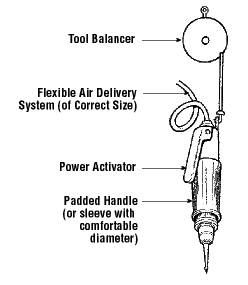
- Blow out the air line before connecting a tool. Hold hose firmly and blow away from yourself and others.
- Make sure that hose connections fit properly and are equipped with a mechanical means of securing the connection (e.g., chain, wire, or positive locking device).
- Install quick disconnects of a pressure-release type rather than a disengagement type. Attach the male end of the connector to the tool, NOT the hose.
- Do not operate the tool at a pressure above the manufacturer’s rating.
- Turn off the air pressure to hose when not in use or when changing power tools
- Do not carry a pneumatic tool by its hose.
- Avoid creating trip hazards caused by hoses laid across walkways or curled underfoot.
- Do not use compressed air to blow debris or to clean dirt from clothes.
Dos and Don ts – Power tools:
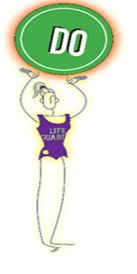
- Use the right tool for the job.
- Inspect tools before each use.
- Make sure there are guards around points of operation and on/off switches.
- Be sure that tools are switched off before you plug them in.
- Turn off and unplug tools before cleaning or changing parts.
- Use three-prong grounding extension cords with equipment requiring three-prong plugs. Don’t use three-prong cords with two-prong adapters!.
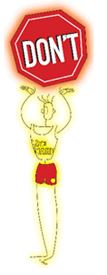
- Put a power tool down until it has completely stopped running.
- Use cords to raise or lower equipment.
- Fasten cords with staples, nails, or other fasteners that could damage cord insulation.
- Plug or unplug equipment with wet or sweaty hands.
- Use any tool that has a damaged casing, cord, or plug.
- Continue to operate a power tool that sparks, smokes, gives a shock, or smells like it’s burning.
- Get clothes or body parts near the point of operation.
- Use electric power tools in wet areas unless the tools have been specially approved for.
Dos and Don’ts – Hand Tools:
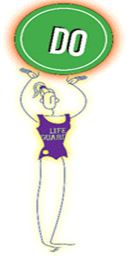
- Use tools designed to allow wrist to stay straight. Avoid using hand tools with your wrist bent.
- Ensure that employees are properly trained in the safe use of hand tools.
- Use good quality tools and keep tools in good condition at all times.
- Inspect tools for defects before use. Replace or repair defective tools.
- Keep cutting tools sharp and cover sharp edges with suitable covering to protect the tool and to prevent injuries from unintended contact.
- Replace cracked, splintered, or broken handles on files, hammers, screwdrivers, or sledges.
- Ensure that the handles of tools like hammers and axes fit tightly into the head of the tool.
- Replace worn jaws on wrenches, pipe tools and pliers.
- Redress burred or mushroomed heads of striking tools.
- Pull on a wrench or pliers. Never push unless you hold the tool with your palm open.
- Point sharp tools (e.g., saws, chisels, knives) laying on benches away from aisles and handles should not extend over the edge of the bench top.
- Maintain tools carefully. Keep them clean and dry, and store them properly after each use.
- Carry tools in a sturdy tool box to and from the work site.
- Wear safety glasses or goggles, or a face shield (with safety glasses or goggles) and well-fitting gloves appropriate for the hazards to which you may be exposed when doing various tasks.
- Use a heavy belt or apron and hang tools at your sides, not behind your back.
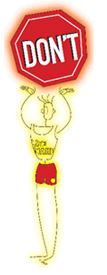
- Do not use tools for jobs they are not intended to do. For example, do not use a slot screw drivers as a chisel, pry bar, wedge or punch or wrenches as hammers.
- Do not apply excessive force or pressure on tools.
- Do not cut towards yourself when using cutting tools.
- Do not hold the stock in the palm of your hand when using a cutting tool or a screwdriver.
- Do not wear bulky gloves to operate hand tools.
- Do not throw tools. Hand them, handle first, directly to other workers.
- Do not carry tools in a way that interferes with using both hands on a ladder, while climbing on a structure, or when doing any hazardous work. If working on a ladder or scaffold, tools should be raised and lowered using a bucket and hand line.
- Do not carry a sharp tool in your pocket.
Click the below link to download tools safety related documents
handsafety-hand-tools
handtools-equipment
portable-hand-power-tools
Power tools – Tool box talk











